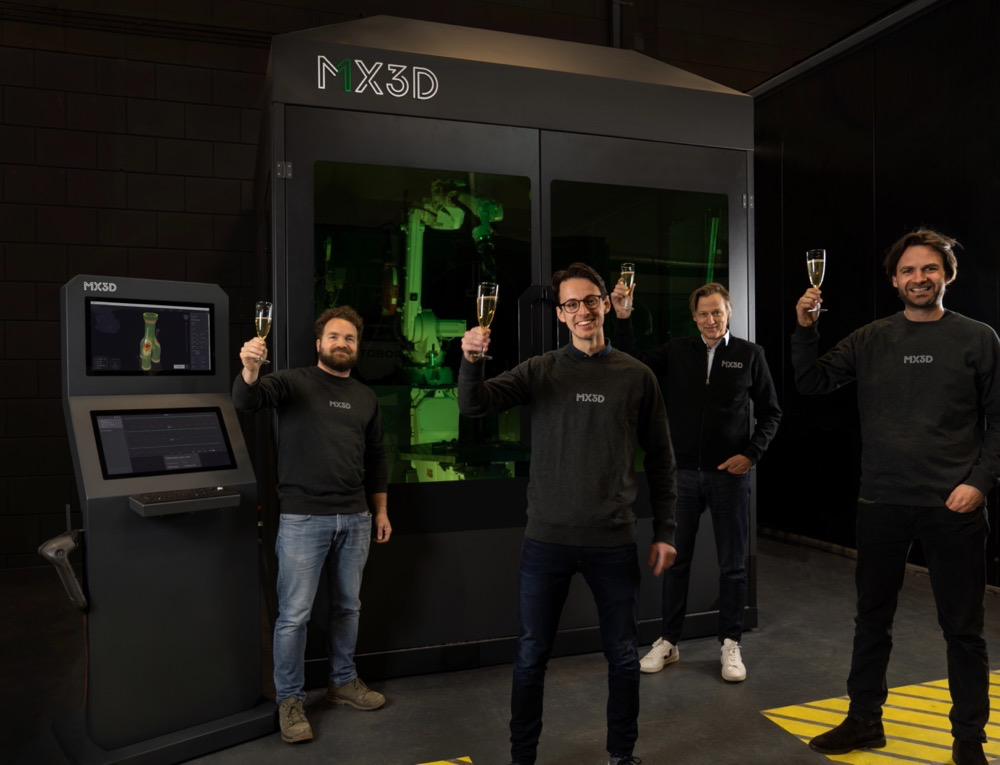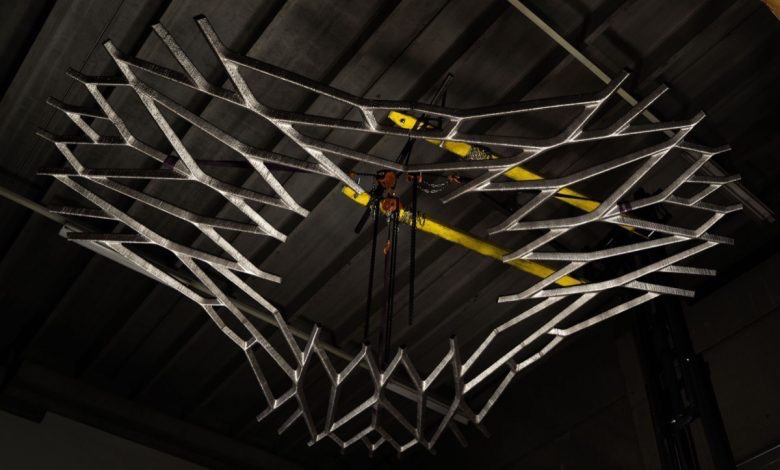A skeletal floor for the ESA-supported lunar habitat design was created by leading architects Skidmore, Owings and Merrill and is currently on show at this year’s Venice Biennale. This prototype lunar floor design section was 3D printed in stainless steel by Dutch company MX3D, known for creating a metal 3D printed bridge in Amsterdam using internally developed large format, robotic WAAM technology
Designed to meet efficiency, use, and construction constraints, the structure’s smooth web pattern design emerged from delineating stress map analysis and optimizing a continuous topology to reduce mass and make maximum use of 3D printing manufacturing methods.
It was printed MX3D’s using robotic wire arc additive manufacturing out of 308LSi stainless steel and took about 246 hours to make, adding up to a total mass of approximately 395 kg.
The overall floor design is made out of six separate segments that were printed vertically before being welded together. The 3D printed structure is supported by three columns and hosts a series of floor panels.
“The innovative floor design is supported from columns in the habitat walls, cantilevering towards the perimeter and center,” commented Daniel Inocente, SOM Senior Designer for the study.
Manufacturing on Demand
“We looked at the manufacturing constraints and used our analysis to interpolate a web pattern that followed the angular limits of the 3D printing machines. The cross-section and thickness were also analyzed and differentiated to reduce the overall mass – with reduced thickness at the exterior/interior boundaries.”

“This was a great opportunity to show the potential of our technology for the fabrication of lightweight metal structures together with ESA and SOM,” explained Gijs van der Velden, CEO of MX3D. “It was a perfect project for MX3D to leverage its experience in printing topology optimized metal structures. Achieving an optimal use of the material is a company goal at MX3D because – just as when designing space applications – every reduced kilo in an MX3D design is a direct win for a project’s feasibility.”
Advenit Makaya, Advanced Manufacturing Engineer at ESA added: “This is a remarkable achievement from MX3D, which further highlights the potential of this additive manufacturing technique for an increasing range of space applications. The design flexibility and the possibility to combine the printed structure with embedded monitoring systems – as demonstrated in the 3D printed bridge in Amsterdam – are worth investigating for applications in space structures.
“This technique could also be considered for in-situ construction of infrastructure during sustainable exploration missions, for instance by using metallic feedstock derived from the locally available regolith.”
Thomas Rohr, Head of the Materials and Processes team at ESA concluded: “The capabilities of MX3D demonstrate inspiring concurrence of engineering and art, and are another great example to what extent additive manufacturing has already entered our society. For space applications, such technologies not only provide improvements in performance but can lead to unprecedented and enabling design solutions.”
This prototype was not able to be exhibited at SOM’s Biennale show, entitled ‘Life Beyond Earth’, but shows the scale of the four-story semi-inflated habitat the company has devised for their design study of future lunar settlement.
* This article is reprinted from 3D Printing Media Network. If you are involved in infringement, please contact us to delete it.
Author: Davide Sher


Leave A Comment